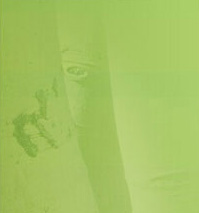 ^^^
^^^
Dr. Miloslav Zacharda
Position
Scientist

Na Sádkách 7, CZ-37005 České Budějovice
Phone: +420 387775626
Fax: +420 385310249
zacharda@usbe.cas.cz
Publications
- Zacharda, M., Gude, M., Růžička, V. (2007) Thermal regime of three low elevation scree slopes in central Europe. In: Permafrost and Periglacial Processes. Vol 18 (3), pp. 301-308.
- Zacharda, M., Kučera, T. (2006) Diversity of predatory rhagidiid mites (Acari: Rhagidiidae) inhabiting montane stony debris in the Ötztal Alps, North Tyrol, Austria. In: Arctic, Antarctic and Alpine Research. Vol 38 (2), pp. 292-300.
- Zacharda, M., Boucníková, E. (2005) Screes as important landscape structures for xeric and psychrophylic biota conservation and monitoring environmental change. In: Ecology (Bratislava). Vol 24 (supplement 1), pp. 28-38.
- Zacharda, M., Gude, M., Krause, S., Hauck, Ch., Molenda, R. and Růžička, V. (2005) The Relict Mite Rhagidia gelida (Acari, Rhagidiidae) as a Biological Cryoindicator of Periglacial Microclimate in European Highland Screes. In: Arctic, Antarctic and Alpine Research. Vol 37 (3), pp. 402-408.
- Hanousková I., Boháč J., Sedláček F., Šerá B., Lepšová A. & Zacharda M. (2004) Harmful organisms in urban green areas. In: Ecology (Bratislava). Vol 23 (1), pp. 58-68.
- Zacharda, M. (2001) Predatory Phytoseiid mites (Acari: Phytoseiidae) as bioindicators of stress impact on a farmland and butresses of the farmland revival. In: Ecology (Bratislava). Vol 20, pp. 47-56.
- Zacharda, M. (2000) New and little-known species of Rhagidiidae from talus ecosystems, in the Czech Republic and Austria. In: Journal of Zoology. Vol 251, pp. 105-118.
- Zacharda, M. (2000) New species of the genus Toglocheles (Acardi: Prostigmata: Rhagidiidae) from Oetztal Alps, with a key to adult species of the genus. In: Journal of Natural History. Vol 34, pp. 463-478.
- Zacharda, M. (2000) New species of the rhagidiid genus Foveacheles (Acari: Prostigmata: Eupodoidea) with a lyrifissure -like structure on the chelicerae. In: Journal of Natural History. Vol 34, pp. 247-265.
